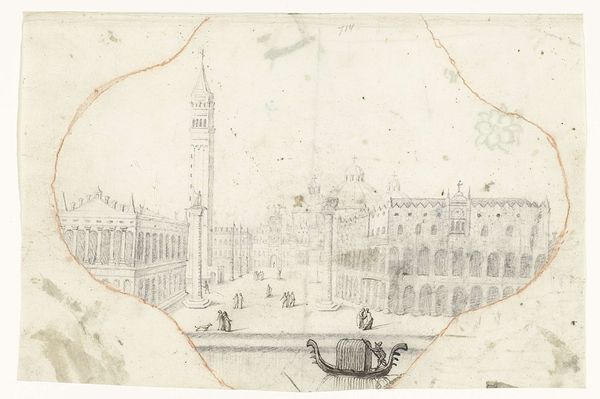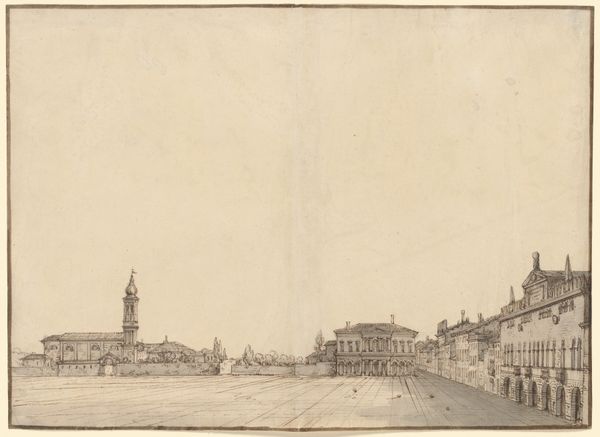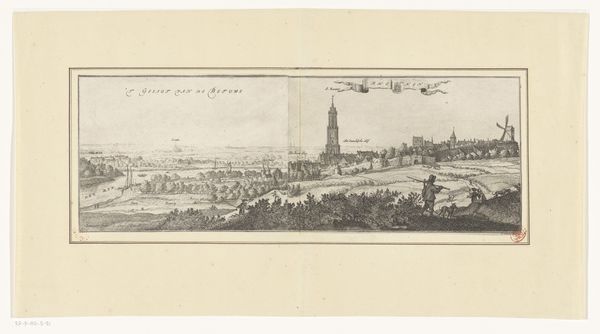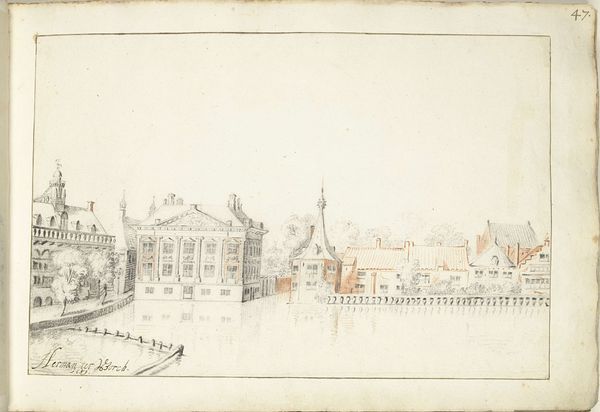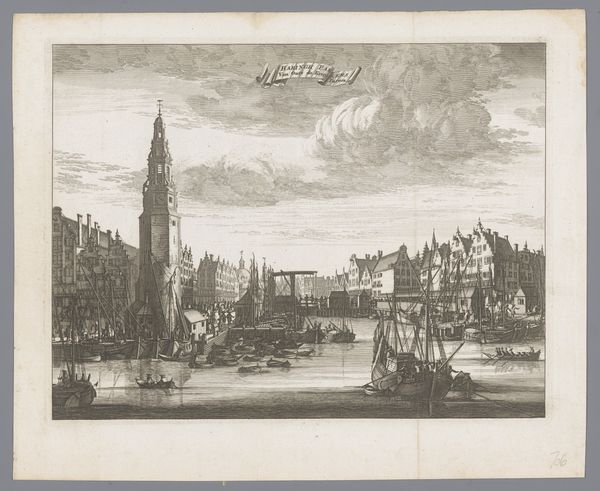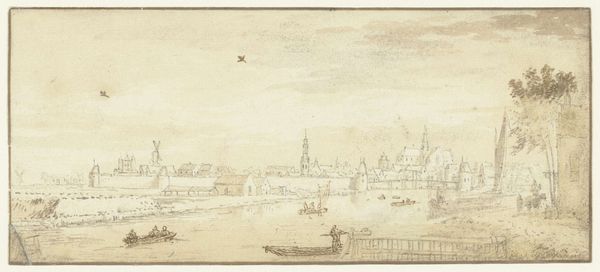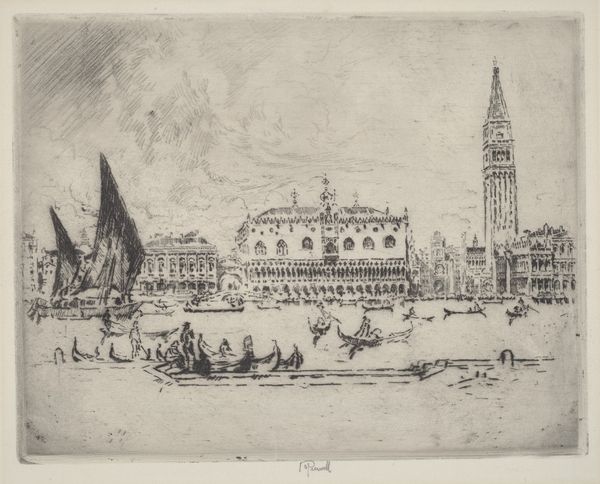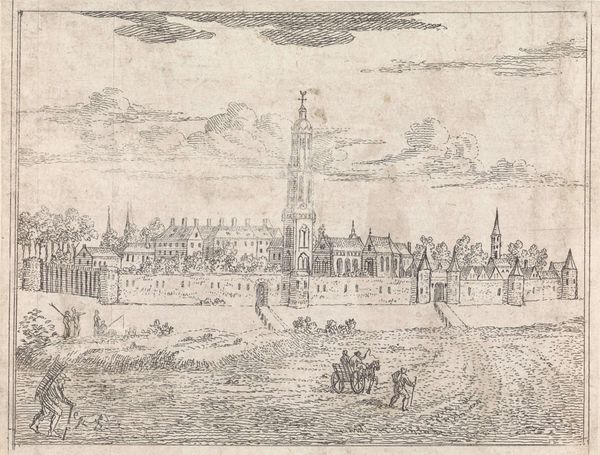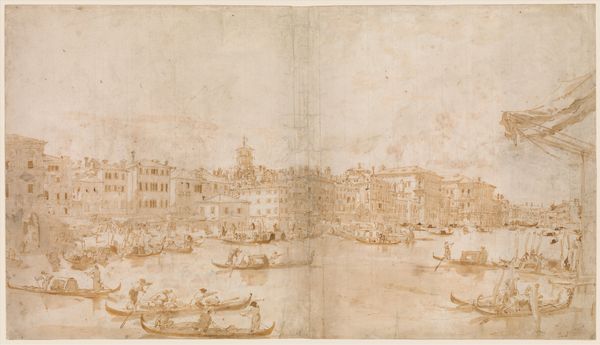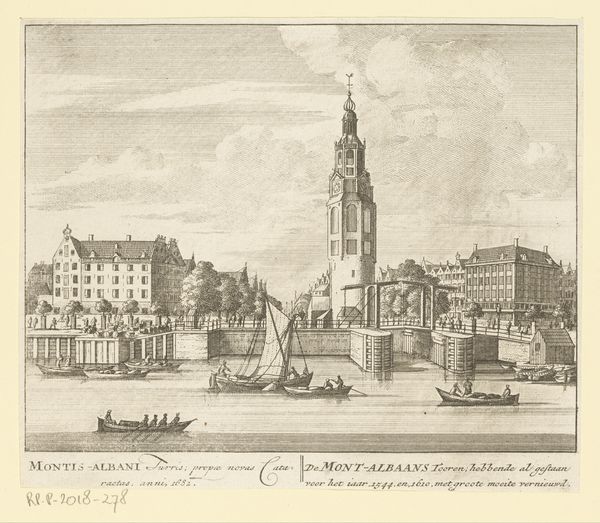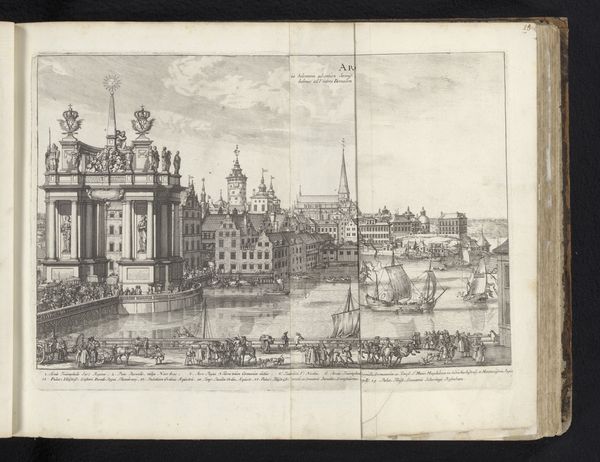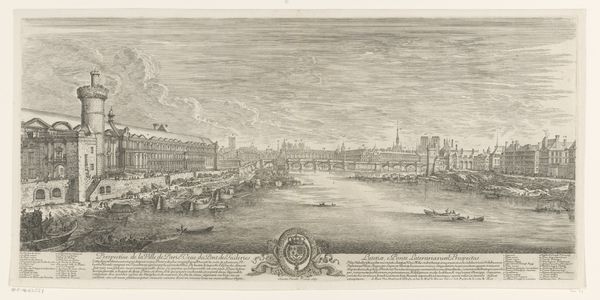
Gezicht op de Bibliotheek, Campanile en Dogenpaleis te Venetië, gezien vanaf het water 1730 - 1780
0:00
0:00
Dimensions: height 265 mm, width 385 mm
Copyright: Rijks Museum: Open Domain
Curator: It strikes me as incredibly light. Almost ethereal, really. Editor: Indeed. We’re looking at Bernardo Bellotto’s, "View of the Library, Campanile, and Doge's Palace in Venice, Seen from the Water," created sometime between 1730 and 1780. It's an ink drawing on paper, showcasing his detailed observation of the Venetian cityscape. Curator: The Campanile… what an enduring symbol of Venetian identity. And see how Bellotto renders the Doge’s Palace? Each brick and arch carrying centuries of cultural weight, wouldn't you agree? Editor: Absolutely. Bellotto, like Canaletto, often used the camera obscura. These lines feel so precise, it makes me wonder about access, about who could afford gondola passage for such an advantageous perspective in eighteenth-century Venice. The labour implicit in these cityscapes is often glossed over. Curator: That's a crucial point. The water itself reflects more than light. Consider the gondolas; each stroke speaks to Venice's maritime power, even now as it transforms, redefines itself on shifting grounds of political and environmental change. How can we see beyond a beautiful picture? Editor: True. There’s a tension, isn't there, between the beauty presented and the socio-economic realities shaping Venice at that moment. What this view elides, after all. Still, one could argue that these structures, frozen as image, have played their part in shaping the evolving identity and continuity of Venice. The tower, a signifier of stability in this age of the Anthropocene... Curator: But, for whom is it stable? I look for the narrative disruptions, for the fault lines inherent in the visual landscape. Art is always, I think, a site of struggle, negotiating these powers and historical currents. What do we leave behind when tourism overtakes city? What images persist? Editor: These cityscapes invite such diverse readings precisely because of their careful depiction of symbols. They make us ponder the weight these icons continue to bear, shaping how we interpret the culture that produced them. Curator: An artwork that invites us to navigate the currents of both aesthetics and social consciousness. Editor: Precisely; a continuous dance between representation and cultural memory, always pointing beyond what’s immediately seen.
Comments
No comments
Be the first to comment and join the conversation on the ultimate creative platform.

